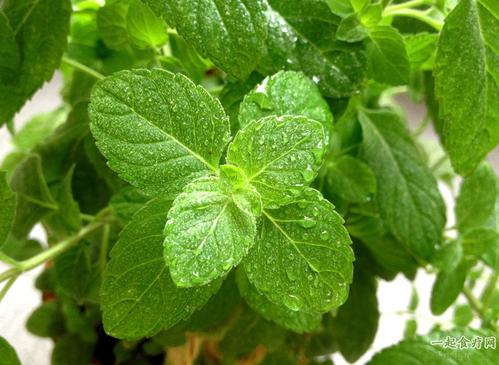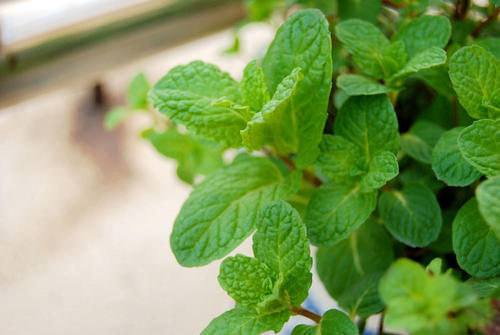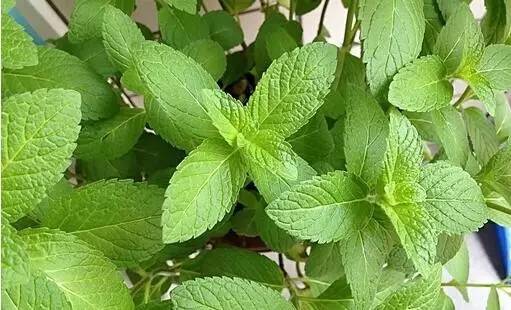Mentha Haplocalyx Briq profile
Written by Maggie
Nov 23 2020

Mentha Haplocalyx Briq is an aromatic crop of special economic value. Mentha Haplocalyx Briq is green and fragrant. Mentha Haplocalyx Briq is also one of the traditional Chinese medicines.It is a hot and cool sweating antipyretic for influenza, headache, eyes, body heat, throat, gums, swollen pain and other diseases. It can treat neuralgia, pruritus, rash and eczema.Mentha Haplocalyx Briq, picked at The Guangpeng greenhouse, is another fresh dish on the Spring Festival table. It is refreshing and delicious. Mentha Haplocalyx Briq is usually used to replace tea with clear mind and bright eyes.
Mentha Haplocalyx Briq picture

Mentha Haplocalyx Briq morphological characteristics
Mentha Haplocalyx Briq is a perennial herb.Stems erect, 30-60 cm tall, lower nodes with slender fibrous roots and horizontal prostate rhizomes, acute four-prismatic, with four channels, upper part obliquely puberulent, lower part only puberulent along ribs, much branched. Leaf is blade oblong-lanceolate, lanceolate, elliptic or ovate-lanceolate, thinly oblong, apex acute, base cuneate to suborbicular, margin sparsely coarsely toothed serrate above base, petiole ventral convex, puberulent. Inflorescences are axillary, globose in outline, flowers ca. 18 mm in diameter, pedicellate or sessile, pedicels up to 3 mm when sessile, puberulent. Pedicels are slender, puberulent or nearly glabrous. Calyx is tubular bell-shaped, puberulent and glandular, glabrous inside, 10 veined, inconspicuous, calyx teeth 5, narrowly triangular-subulate, apex long acute.Corolla light purple, slightly puberulent outside. Stamens 4, anterior to longer, ca. 5 mm, all extending beyond corolla, filamentous, glabrous, anthers ovoid, 2-loculed, parallel.Style slightly beyond stamen, apex nearly 2-lobed, lobes subdued. Nutlets are ovate-beadlike, yellow-brown, with small glandular fossa.Flowering period is from July to September, fruiting in October.
Mentha Haplocalyx Briq growth habit
Mentha Haplocalyx Briq has a strong adaptability to environmental conditions, while mentha haplocalyx briq has a strong adaptability to temperature. Its rhizomes persist over winter and can withstand -15℃ low temperature.The optimum temperature for its growth is 25℃-30℃.The growth was slow when the temperature was lower than 15℃ and accelerated when the temperature was higher than 20℃. At 20℃-30℃, as long as the appropriate water and fertilizer, the higher the temperature, the faster the growth. mentha haplocalyx Briq does not have very strict requirements on the soil. In addition to soils that are too sandy, too sticky, too acidic or too alkaline and have poor drainage, generally the soil can be planted. Sandy loam and alluvial soil are preferred.The pH value of soil is 6-7.5.
Mentha Haplocalyx Briq is a long sunshine crop and likes sunshine. Long sunshine can promote the flowering of Mentha Haplocalyx Briq, and facilitate the accumulation of Mentha Haplocalyx Briq oil and Mentha Haplocalyx Briq brain.

Mentha Haplocalyx Briq distribution area
Mentha Haplocalyx Briq is widely distributed in temperate regions of the northern Hemisphere and all over China.There are many cultivated areas in China, among which Jiangsu and Anhui are traditional producing areas, but the cultivated area is decreasing day by day. It exists in Tropical Asia, the Russian Far East, North Korea, Japan, and North America (as far south as Mexico).
Mentha Haplocalyx Briq breeding method
1. Mentha Haplocalyx Briq root propagation: The root breeding is carried out in late April or late August. Plants with strong growth and no pests or diseases were selected as the mother plants in the field and planted according to the row spacing of the plants (20×10cm). After harvesting the leaves and stems in the ground in the early winter, the rhizomes remain in place for planting.
2. Mentha Haplocalyx Briq propagation by plant: Mentha Haplocalyx Briq seedling height is about 15cm, and should be thinned and replanted..
3. Mentha Haplocalyx Briq cutting propagation: from May to June, cut the ground stem and branches into cuttings of 10cm in length, and then carry out cuttings propagation according to the row spacing of 7×3cm on the whole seedbed, and transplant to the field for cultivation after rooting and germination.

The main use of Mentha Haplocalyx Briq
1. Edible: Mentha Haplocalyx Briq has both medical and edible functions. The main edible parts are stems and leaves. In food, Mentha Haplocalyx Briq can be used as a flavoring agent, as well as as a spice. It can also be used as wine and tea.
2. Medicinal: Mentha Haplocalyx Briq is commonly used in Chinese medicine. It can be used as a vegetable and whole grass as medicine for colds, fever, sore throat, headache, sore eyes, muscle pain, skin rubella itching, measles imperforation, etc. In addition, it is also effective for carbaches, ganglion, scabies, ringworm and lacquer sore. Mentha Haplocalyx Briq contains menthol, which can freshen breath and has a variety of medicinal properties. It can relieve abdominal pain and gallbladder problems such as cramps, and also has the functions of antiseptic, antiseptic, diuresis, phlegm, stomach strengthening and digestion aid. Large doses of Mentha Haplocalyx Briq can cause insomnia, but small doses can help you sleep.
Latest Updated
- Benefits of Bugleweed - 7 Science-backed Health Benefits
- Bugleweed Dangers & Side Effects - Is It Poisonous?
- How to Plant Evergreen Trees - What You Should Know
- When to Plant Evergreens - Grow Guide for Evergreen Trees
- 12 Wonderful Evergreen Shrubs for Your Garden
- 12 Popular Evergreen Plants with Pictures for Beginners
- When And How To Prune A Lilac Bush Like a Pro
- How to Grow & Care for Lilac Vine (Hardenbergia Violacea)
- Japanese Lilac Tree (Syringa Reticulata) Care & Propagation Guide
- Shumard Oak Pros and Cons - What to Know
Popular Articles
- Winter maintenance of Antirrhinum Majus
- How to Grow Terminalia Mantaly Tree
- How to Grow and Care for Crossostephium Chinense
- How to grow Antirrhinum Majus in spring
- Peristeria Elata (Dove Orchid) Profile: Info & Care Guide
- Underwatered Snake Plant (Sansevieria Trifasciata) - Signs And How To Fix
- How to Care for Brazilian Jasmine Plant (Mandevilla Sanderi)
- How to Grow & Care for Graptopetalum Purple Delight in Summer
- Rosa Chinensis (China Rose): Plant Growing & Care Tips
- How to Care for Baby Sun Rose (Aptenia Cordifolia)